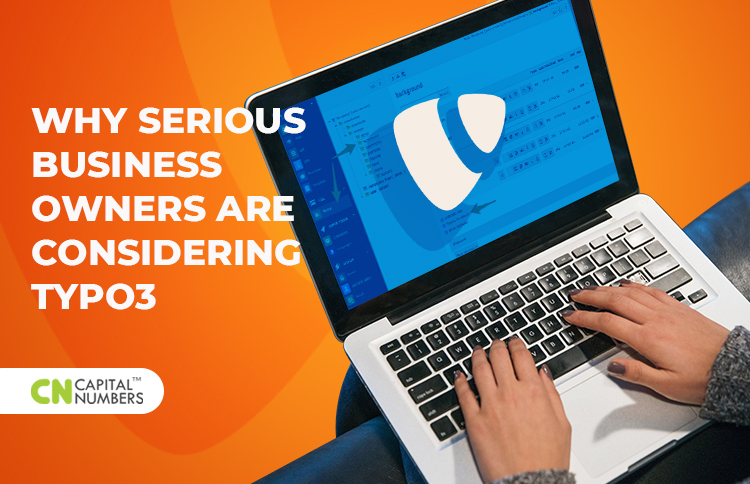Why Serious Business Owners Are Considering Typo3
Table of Contents
If you’re interested in a new, or upgraded enterprise content management system, it’s likely you’ve heard about TYPO3. You may know that it is among the most flexible and easy to use CMS for enterprises today— but did you know it might be the last CMS you ever need?
TYPO3 is the CMS for serious businesses — businesses which are expecting high growth and need a modular, adaptable CMS to support them. When involved in the day to day growth of your business, the last thing you should worry about is minutiae such as which CRM you need to migrate everything to — much less the headache of migration itself. TYPO3 will help you get around this issue because it’s built to scale with you.
Decision makers interested in TYPO3 will appreciate that it has no license cost. As a open-source software, TYPO3 comes free of charge. It’s yours to use for whatever you like, for as long as you like. And the team takes this seriously. “It has always been this way, it is this way, and it will stay this way,” the website boasts.
Second, TYPO3 is highly functional and ready to use right “out of the box.” Although different modules, upgrades, and plugins exist in the TYPO3 Extensions Repository to personalize your CMS, you probably don’t need them to get started.
What are the other advantages of this CMS? There are many. If you’re interested in a CMS that can support a robust business, keep reading.
Multiple Website Management and Multilingual Support
Outsourcing or interested in outsourcing? Launching a product or service in different countries? Or do just want more robust support for the globalized nature of international business? If so, TYPO3 is for you.
TYPO3 comes with the ability to run websites in multiple different languages, making management of these sites so much easier and less of a headache compared to other CMS. This built-in feature ie one of the immediate things that signal TYPO3 is better for large scaled businesses than most other CMS. TYPO3 comes with everything you need to manage and execute large web projects on an international scale, rising above its competitors for businesses who expect to operate in the global economy.
Robust Digital Asset Management
If you’re looking to grow and scale, the amount of digital content you need to manage will grow with you. While you can bring in third-party digital asset management (DAM) software, there’s no need with TYPO3. It comes equipped with strong digital asset management for almost any situation.
For example, TYPO3 CMS supports image management and manipulation. You only need to upload an image once. Then if you need to, you can reuse it with multiple different variants for device and browser compatibility or any other need. But that’s not all. With TYPO3, you get tools for file management, publishing, searching, and scheduling, permission handling, distribution models, and more.
Free & Flexible
As we mentioned before, TYPO3 is open-source and free to use. For such a robust CMS, this is unique. Here’s how it works:
In addition to the TYPO3 core team — a selection of specialists who develop the core functions of TYPO3 – it is supported by a large community who provide ongoing QA, code versioning, and project management. The community values transparency, collaboration, and sharing, so you can go through and look at past updates and other development that the team has worked on before you. So in this sense, TYPO3 is not only free in terms of its licensing but also free in terms of how much of it is made available for study.
Control Over Group Editing and Publishing
This essential feature of TYPO3 makes it perfect to use for large teams or projects that require input for many departments. What is an editorial workspace? It’s simply a space for groups to collaborate on and edit content — without affecting the content on the live site.
The TYPO3 team developed and customized different workspaces to suit different requirements and provide control over the editing and publishing process. For example, you can create groups of editors and publishers. The editors can make and suggest changes, but it’s up to the publishers to actually implement the changes so they appear on the live website.
If you have access to the back end, you can easily compare the changes in the live version and the workspace version and give the go-ahead before the changes go live.
New Releases
TYPO3 releases new updates regularly to keep up with the demands of business. In fact, at the time of this writing, it has just released an update, version 9.5. The TYPO3 team releases new updates every 18 months, and this one promises to offer the most advantages and benefits to businesses than any other. Faster site speeds and improved SEO is just the start.
When you start using TYPO3, you aren’t using a static system. You’re using a system that is constantly being updated and upgraded by a passionate community — and of course you pay nothing for these additional updates. As the needs of the market change, TYPO3 will change to support them.
Conclusion
Serious businesses looking into the future should consider making the change to TYPO3. With its ability to run sites in many different languages, control over back end editing, and robust DAM, it’s a smart choice if you plan to grow. Plus, there’s almost no downside to using it, as it’s updated constantly and is free to use.















